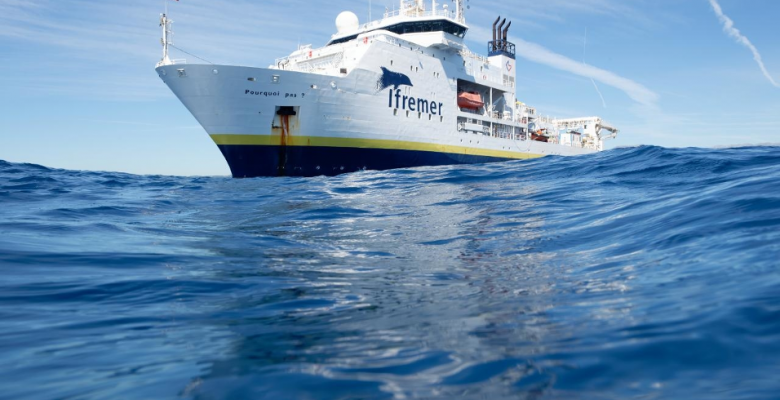In the heart of the tropical Atlantic, international teams of scientists are closely monitoring silent transformations taking place beneath the surface that are significantly altering the ocean’s balance. Since 1997, their work has been discreet but essential in tracking changes in the global climate system.
by Laurie HENRY
Cover photo: Dugornay Olivier (2024). The R/V Thalassa during the BREST Maritime Festival Brest 2024. Ifremer. https://image.ifremer.fr/data/00953/106435/
The tropical Atlantic plays a decisive role in regulating the global climate. The energy exchanges between the ocean and the atmosphere that take place there directly influence rainfall in the Sahel, hurricanes in the North Atlantic and sometimes even extreme weather events in Europe. Yet this region remains one of the least observed on the globe.
To remedy this, scientists from several countries have set up the PIRATA (Prediction and Research Moored Array in the Tropical Atlantic) network, a network of buoys coupled with annual ocean campaigns to document the physical and chemical evolution of the ocean. Since 1997, France has been actively contributing to this initiative, particularly in the Gulf of Guinea, an area sensitive to the effects of climate change. At a time when geopolitical tensions are complicating access to African waters, these observation and cooperation efforts are becoming crucial to understanding the changes underway and anticipating their environmental, social and economic repercussions.
A unique infrastructure for observing ocean-atmosphere interactions
The PIRATA programme is based on a structured network of oceanographic and meteorological buoys and on scientific missions carried out annually in the tropical Atlantic. Alongside Brazil and the United States, France is responsible for the eastern part of the study area, including the Gulf of Guinea, in order to monitor phenomena with a strong regional impact, such as surface temperature anomalies influencing the African monsoon and ocean current dynamics.
